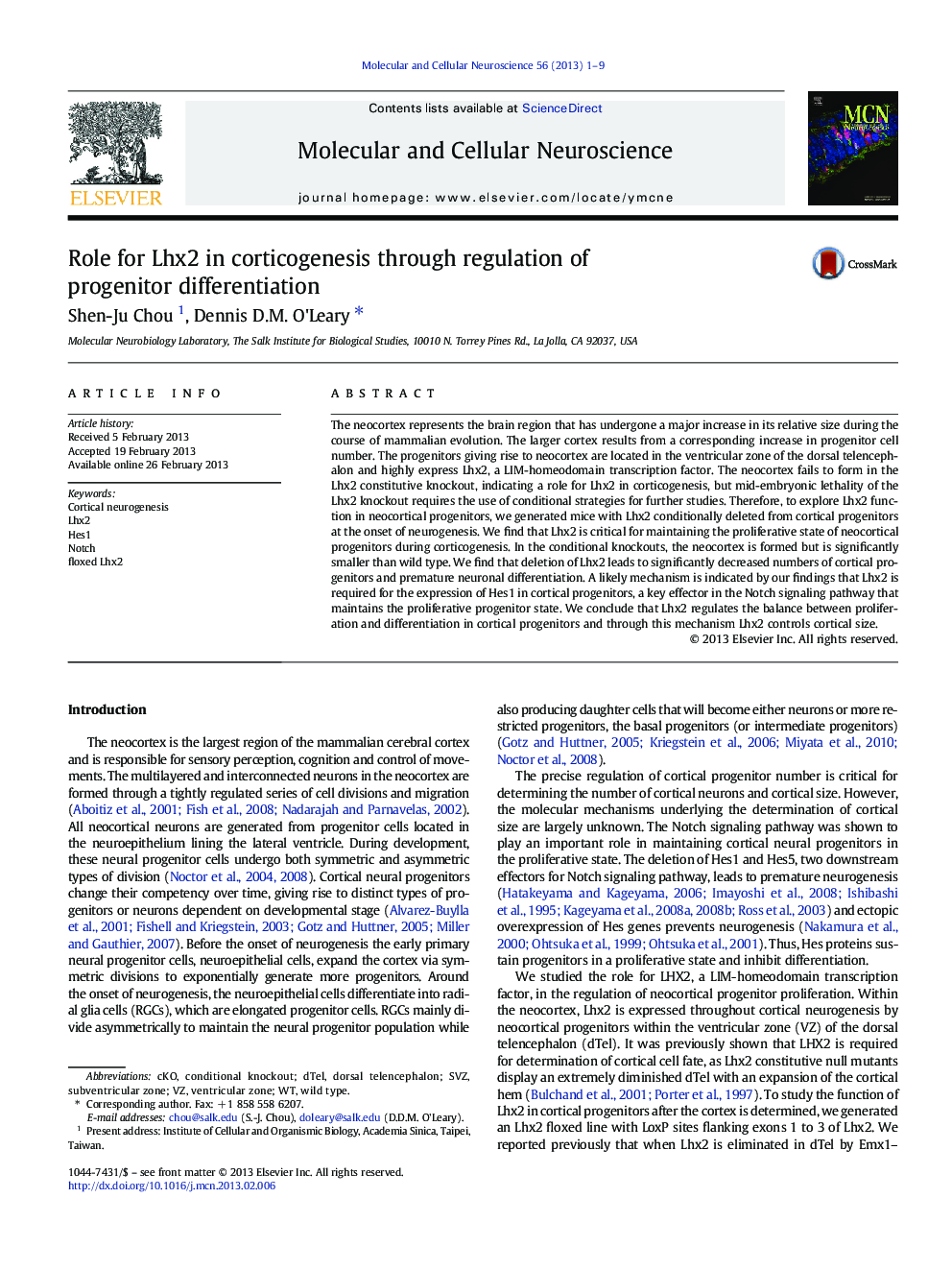| Article ID | Journal | Published Year | Pages | File Type |
|---|---|---|---|---|
| 8478641 | Molecular and Cellular Neuroscience | 2013 | 9 Pages |
Abstract
The neocortex represents the brain region that has undergone a major increase in its relative size during the course of mammalian evolution. The larger cortex results from a corresponding increase in progenitor cell number. The progenitors giving rise to neocortex are located in the ventricular zone of the dorsal telencephalon and highly express Lhx2, a LIM-homeodomain transcription factor. The neocortex fails to form in the Lhx2 constitutive knockout, indicating a role for Lhx2 in corticogenesis, but mid-embryonic lethality of the Lhx2 knockout requires the use of conditional strategies for further studies. Therefore, to explore Lhx2 function in neocortical progenitors, we generated mice with Lhx2 conditionally deleted from cortical progenitors at the onset of neurogenesis. We find that Lhx2 is critical for maintaining the proliferative state of neocortical progenitors during corticogenesis. In the conditional knockouts, the neocortex is formed but is significantly smaller than wild type. We find that deletion of Lhx2 leads to significantly decreased numbers of cortical progenitors and premature neuronal differentiation. A likely mechanism is indicated by our findings that Lhx2 is required for the expression of Hes1 in cortical progenitors, a key effector in the Notch signaling pathway that maintains the proliferative progenitor state. We conclude that Lhx2 regulates the balance between proliferation and differentiation in cortical progenitors and through this mechanism Lhx2 controls cortical size.
Keywords
Related Topics
Life Sciences
Biochemistry, Genetics and Molecular Biology
Cell Biology
Authors
Shen-Ju Chou, Dennis D.M. O'Leary,
